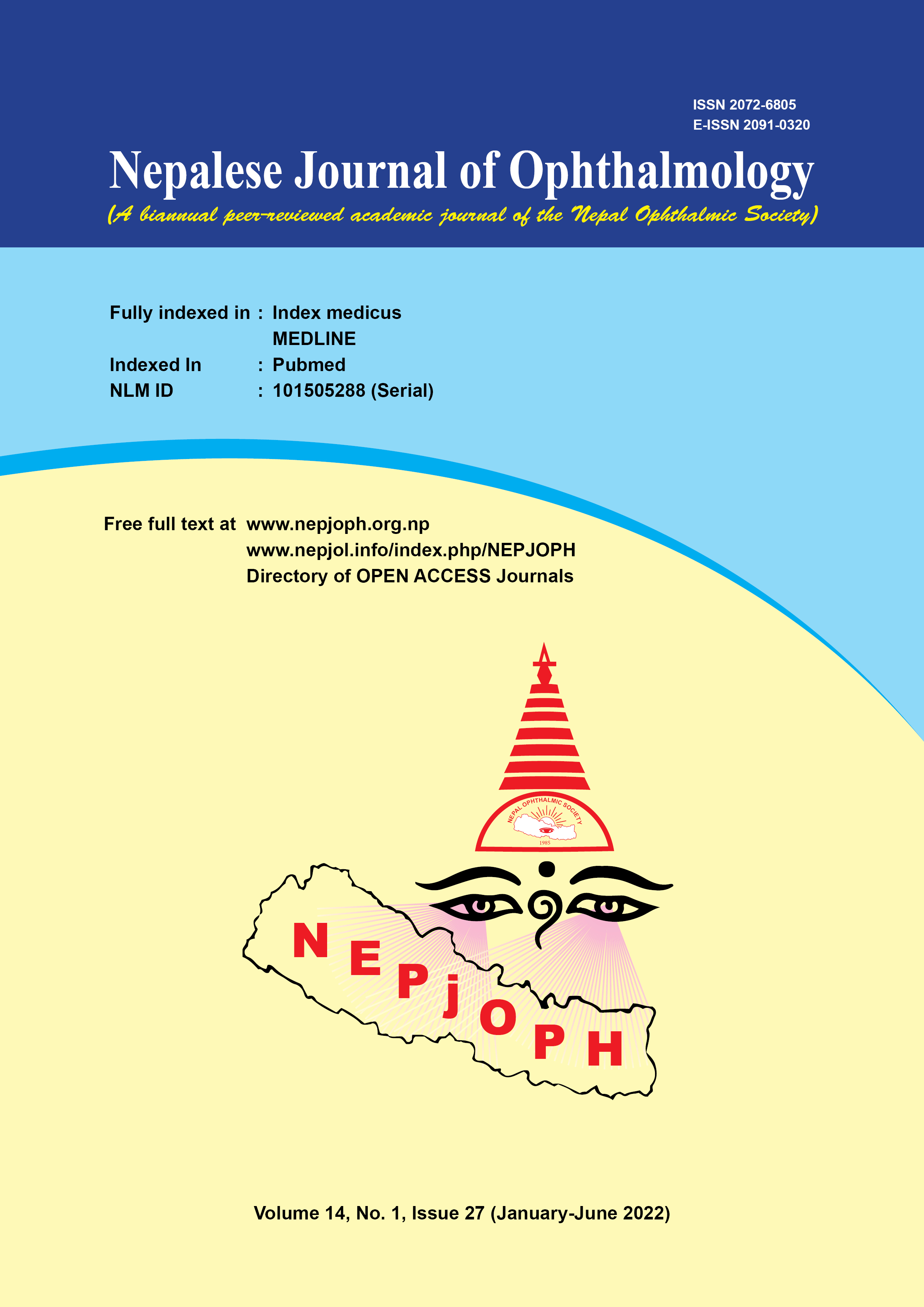Observations on Six Rare Cases of Chorioretinitis Sclopetaria
DOI:
https://doi.org/10.3126/nepjoph.v14i1.33047Keywords:
Chorioretinitis sclopetaria, Globe injury, Ocular blast injury, Ocular gunshot injury, Ocular trauma, Traumatic chorioretinal ruptureAbstract
Introduction: Chorioretinitis sclopetaria (CS) is a rare consequence of ocular injury. Its association with open globe injury (OGI) and retinal detachment (RD) is controversial. This study evaluates patterns of chorioretinitis sclopetaria and its association with open globe injury and retinal detachment.
Case: This is an electronic review of records of a tertiary eye care institute of south India with descriptive analysis of six cases. Cases where fundus findings of chorioretinitis sclopetaria were available were included. Information regarding mode of injury, visual outcomes, follow up and causes of poor visual outcomes were obtained. Presence of open globe injury, retinal detachment, vitreous hemorrhage (VH) and orbital foreign body (FB) was also noted. Ultrasound scans of the eyeball were reviewed for presence of signs of chorioretinitis sclopetaria.
Observations: All the injured patients were male (age range 23-52 years). Bullet and blast injuries were the modes of injury. The duration since injury to the last follow up ranged from 0.25 to 12 years. The final visual acuity was <20/200 in 3/6 cases. Open globe injury and retinal detachment was noted in one case each, while 3/5 cases had orbital foreign body. Extensive facial and neuro-surgery were required in 2/6 cases. Sonography showed signs of chorioretinitis sclopetaria in 2/3 cases where scans were available for review.
Conclusions: Though manifestations of chorioretinitis sclopetaria evolve with time with visual improvement, final visual acuity is generally poor. Cases of chorioretinitis sclopetaria may have accompanying retinal detachment or open globe injury. Sonography should be evaluated with a high degree of suspicion for chorioretinitis sclopetaria in typical cases.
Downloads
Downloads
Published
How to Cite
Issue
Section
License
Copyright (c) 2022 Nepalese Journal of Ophthalmology

This work is licensed under a Creative Commons Attribution-NonCommercial-NoDerivatives 4.0 International License.
This license enables reusers to copy and distribute the material in any medium or format in unadapted form only, for noncommercial purposes only, and only so long as attribution is given to the creator.




